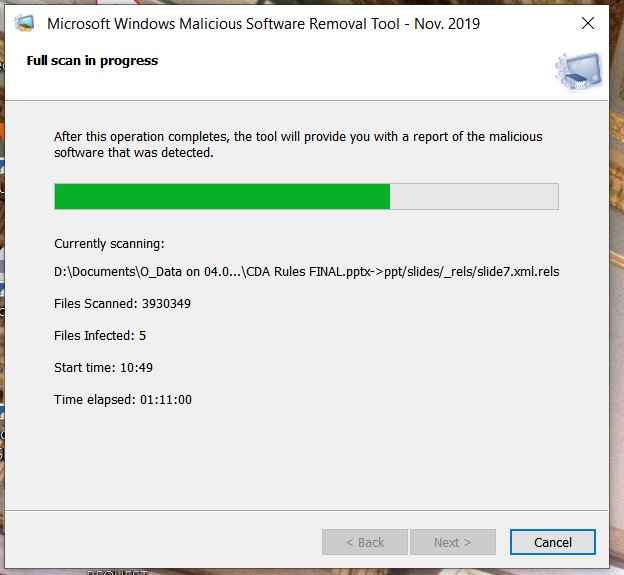The complete explanation is rather involved, but the core reason is simple and relates to how all of the Microsoft security apps operate, but also how the Malicious Software Removal Tool differs from the others.
All of the Microsoft security apps are based on the same core scan engines, even though the display interface and modes of operation for each of these have some minor differences. One of the core design criteria is
that the AV client app collects various file, registry or other detection items during the scanning process and then communicates or "phones home" to the Microsoft servers during the final verification phase immediately before displaying the final results.
This communication is performed not only to collate and verify the names and other information displayed, but also to confirm the item(s) are truly malware and not simply fragments or false positive (e.g. incorrect)
detections.
Since unlike the built-in AV clients such as Defender or MSE, the MSRT tool is sometimes operated manually with the display interface on screen, the Files infected item was added to provide an intermediate indication
that malware "might" be present. However, since the MSRT is also different in that it only detects a small number of roughly 125 of the most common malware "families", the scan engines can sometimes detect potential malicious items that this limited AV client
won't end up displaying in the final scan results.
So what you're seeing is actually a visual anomaly of the fact that the limited MSR client doesn't detect most malware, along with the relatively useless ability for it to display intermediate results that haven't been either collated or verified.
Since the MSRT was designed primarily to operate automatically during the once per month Windows Update (Black Tuesday) process, it was designed for speed and simplicity as a sanity check, so using it as a manual scanning tool other than for this reason
is really a misapplication of the tool. Instead, you should be using either the Microsoft Safety Scanner or the built-in Defender client to perform these manual checks or possibly even a 3rd-party tool like MalwareBytes Ant-Malware as an on-demand alternative
that your core AV product is detecting the variety of malicious items you personally might encounter.
Rob


